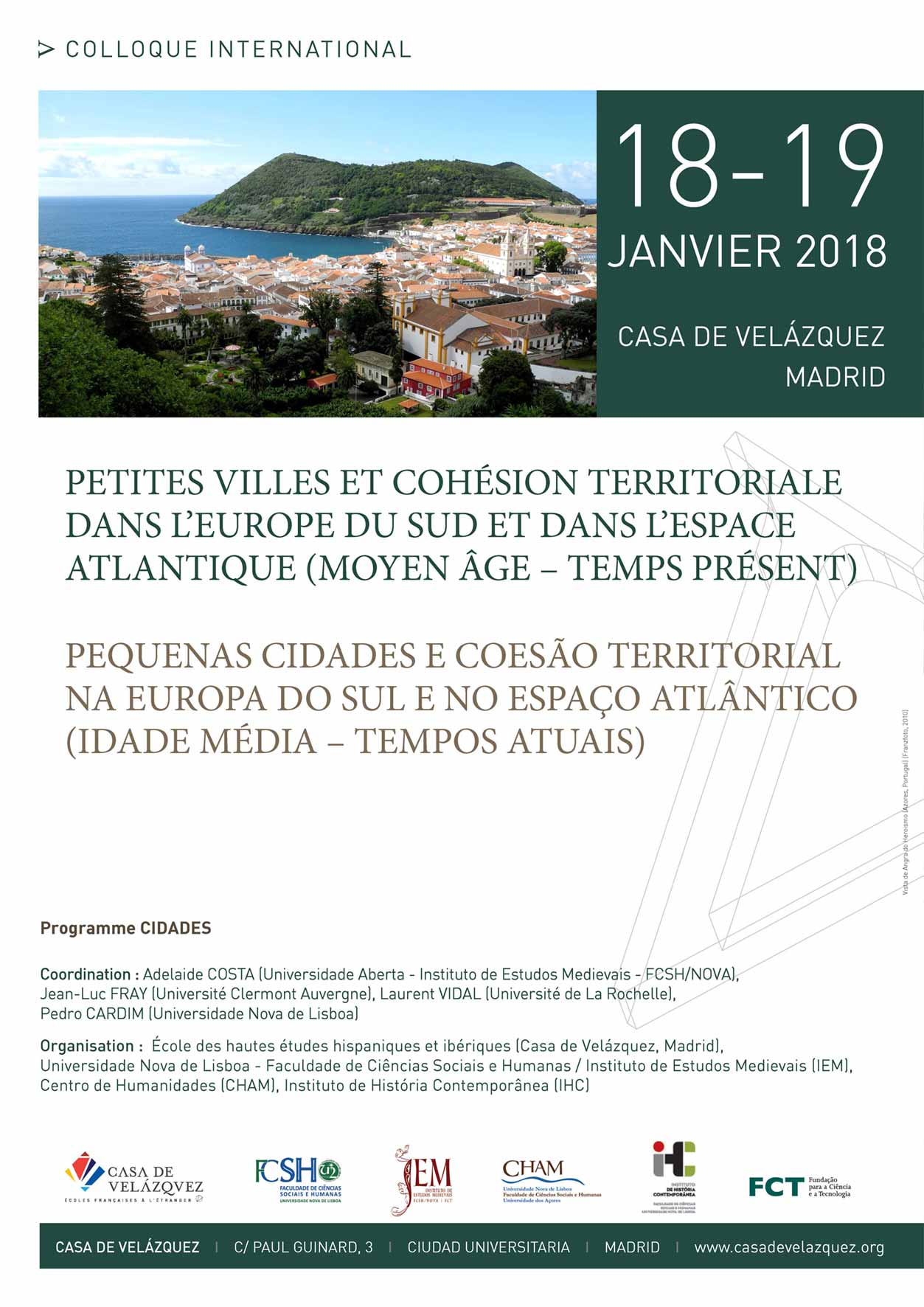Petites villes et cohésion territoriale dans l’Europe du Sud et dans l’Espace Atlantique (Moyen Âge – Temps présent)
18.01.2018 - 19.01.2018
Casa de Velázquez, Ciudad Universitaria, Madrid

The concept of “cohesion” has two complementary meanings: understood in the sense of a unifying force, the term emphasizes the unifying process (for example, a mechanic, a cohesive approach); in the sense of a resultant character, cohesion is, in French, almost synonymous with “coherence” and applies to a whole whose parts are united, linked together by non-contradictory or antagonistic ties.
Territorial cohesion would therefore be “the ability to reconcile the diversity of territories and reduce inequalities linked to space, to improve access to services, to materialize networks, to create and lead cooperation within a given territory” (Observatoire des territoires, 2017).
As for the notion of “small towns” and “medium-sized towns”, the general argument of our research program recalls the need to set aside “the tyranny of the criteria of physical size and demographic weight of urban units”. But, at the same time, the survey must consider the criteria of centrality, urbanity, and a particular and pervasive relationship with the surrounding rural world, while excluding the largest urban organizations, “considered as such in their time and space” (Tesson, 2009).
Coord. : Adelaide COSTA (Universidade Aberta – Instituto de Estudos Medievais – FCSH/NOVA), Jean-Luc FRAY (Université Clermont Auvergne), Laurent VIDAL (Université de La Rochelle), Pedro CARDIM (Universidade Nova de Lisboa)
Org. : École des hautes études hispaniques et ibériques (Casa de Velázquez, Madrid), Institute of Medieval Studies (IEM), School of Social Sciences and Humanities, NOVA University, Centre for the Humanities (CHAM), Institute of Contemporary History (IHC)
Venue:
Casa de Velázquez
C/ Paul Guinard, 3
28040 Madrid
Free entrance
